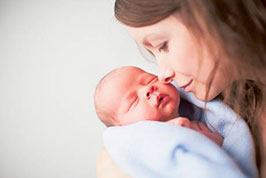Rise in number of C-section deliveries


Dubai: Almost half of all deliveries in the emirate are through C-section or Caesarean deliveries, latest numbers by the Dubai Statistic Center (DSC) reveal.
Worldwide, currently, one in three births happens through C-section while in Dubai 41.2 per cent of births took place through this procedure in 2014, the DSC said. The rate has risen dramatically over the past few decades, said Dr Rashi Gupta, gynaecologist at iCARE clinics.
Reporting 12,055 births through C-section that year, the rate (41.2 per cent) is close to that of natural deliveries, which stands at 53.8 per cent (15,756 births).
While C-section deliveries were procedures performed only when necessary in the past, today they have become an option many pregnant women pick.
“Much concern has been directed towards decreasing the rate of primary Caesarean section, which eventually could have an effect on decreasing the rate of repeat C-sections,” said Dr Gupta. “Both options should be explained to the patient, along with the possibility that the need for a C-section could arise,” said Dr Gupta.
Dr Vaishali Srinivas, specialist gynaecologist and obstetrician, Al Musalla Medical Center, Dubai, said that C-section should not be offered to pregnant women unless it is medically indicated. “These days, many women are requesting elective C-section, because they have anxieties about having natural birth for the first time. They are often afraid of labour pain and the effects of labour on the pelvic floor,” she explained.
Planning a C-section may make them feel more in control, added Dr Srinivas, pointing out that women should remember that the procedure is a surgery and can have its complications.
While natural birth is the more common option, factors contributing to the high C-section rate vary from the effects of common labour interventions to demographic changes and shifts in maternal health.
Dr Gupta explained that labour induction among first-time mothers and/or when the cervix is not soft and ready for delivery, appears to increase the likelihood of a C-section birth.
“Factors such as continuous electronic foetal monitoring versus periodic listening to the foetal heartbeat with a hand-held device can also have that effect. Having an early epidural or lying in bed versus being upright and mobile also seems to increase the likelihood of a Caesarean,” she said.
While there are maternal and foetal indications as to why a C-section might be necessary, advances in surgical expertise, medications, and anaesthetic choices have made operative procedures safer in general, and an alternative option for many women.
“It’s important to note that many women with a previous Caesarean section tend to have repeat sections,” said Dr Gupta.
She pointed out that 85 per cent of leading indications for C-section delivery are due to previous C-section deliveries, women with a foetus in breech position, dystocia (difficult birth, caused by an awkwardly positioned foetus, or by the small size of the maternal pelvis, or by failure of the uterus and cervix to contract and expand normally) and foetal distress.
However, the increase in C-section delivery rates can also be due to changes in the age and maternal health of women getting pregnant. “Overall, pregnant women have become older and heavier, and are more likely to undergo C-section more often,” said Dr Gupta.
Similarly, Dr Srinivas pointed out that while professionals are usually to blame for the increase in C-section deliveries, changes in the childbearing age of women or side-effects of common labour interventions could also be the cause.
“It is important to explore the reasons why a pregnant woman is opting for C-section. The advantages and disadvantages of both methods of delivery [natural and C-section] should be discussed with her,” she said.
Ultimately, a woman’s fears about the methods of delivery and various types of pain relief during delivery should be addressed, and a plan should be agreed on with her obstetrician, she said.
Although C-sections are generally considered safe and, in some situations life-saving, they carry additional risks compared with a natural birth. To begin with, the hospital stay is usually two to four days longer, on average, compared with a woman who has had a natural delivery, explained Dr Gupta.
“Having a C-section also increases a woman’s risk for more physical complaints following delivery, such as pain at the site of the incision and longer-lasting soreness,” she said.
A recent study also showed that women who have had a C-section are less likely to begin early breastfeeding than women who opt for a natural birth. “Once a woman has had her first C-section, she is more likely to have a C-section in her future deliveries. She may also be at greater risk of future pregnancy complications, such as uterine rupture and placenta abnormalities,” added Dr Gupta.
Maternal indications for Caesarean delivery include the following:
Foetal indications for Caesarean delivery include:
Number of live births in 2014 according to method of delivery (Dubai Statistics Center)
Source:http://gulfnews.com/news/uae/health/rise-in-number-of-c-section-deliveries-1.1787773